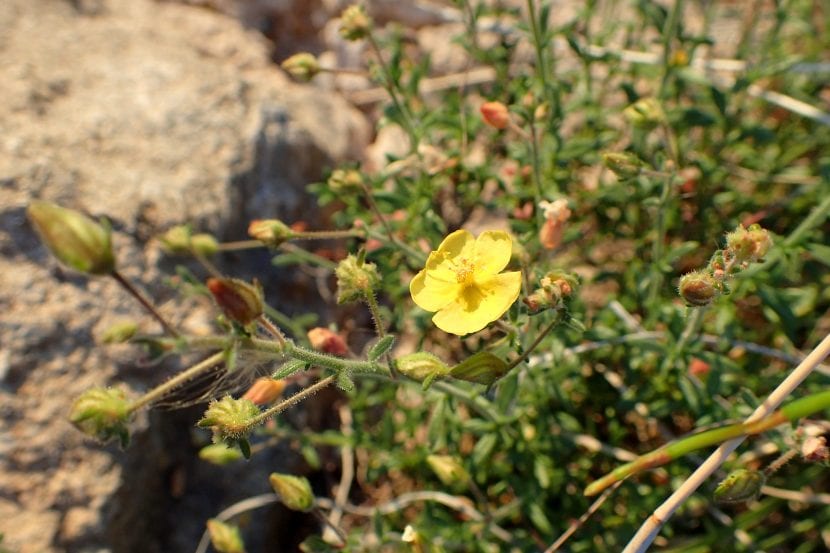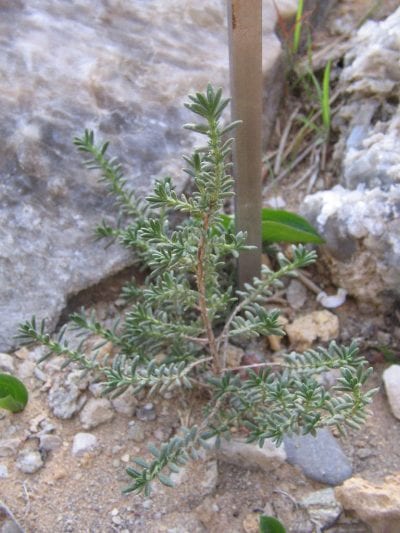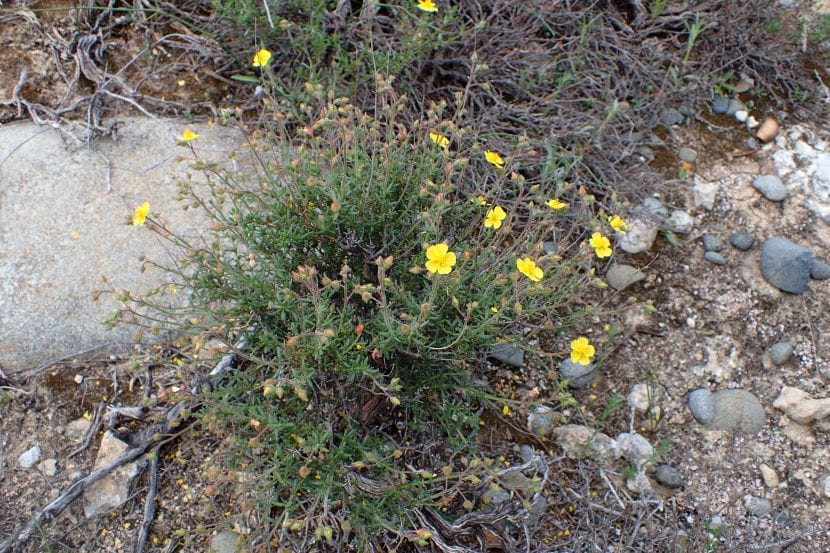
Image - Wikimedia / Franz Xaver
La fumana thymifolia It is a small shrub that we will find growing in very nutrient-poor soils of the Western Mediterranean. In fact, this is precisely what makes it of special interest to grow in gardens with similar characteristics and conditions. Although it is also an excellent option to have in a pot, for example on the patio.
Its maintenance is very simple. And you know what? It has medicinal properties. Next I will tell you how to take care of it and what uses it is given 🙂.
Origin and characteristics

Image - Flickr / ELPpes !!
In this evergreen shrub known as Moorish thyme or rockrose thyme that grows between 30 and 50 centimeters. It is densely branched, with very thin branches barely 0,5cm thick, from which linear leaves sprout that form fascicles.
The flowers, which sprout from late winter to spring, are hermaphroditic, and are gathered in inflorescences of 3 to 6, composed of 5 green sepals, 5 yellow petals, a large number of stamens and a pistil with the developed style. The fruit is a dry capsule.
Uses
Apart from being able to be used as an ornamental, has diuretic properties. To do this, the whole plant is cooked.
What are their cares?

Image - Wikimedia / Krzysztof Ziarnek, Kenraiz
If you want to have a specimen of Fumana thymifolia, we recommend you take care of it in the following way:
- Location: it must be outside, in full sun.
- Earth:
- Garden: grows in clay soils, calcareous, poor in nutrients.
- Pot: universal cultivation substrate can be used, mixed or not with 30% of perlite.
- Irrigation: moderate in summer, trying that the land does not remain dry for a long time, and scarce the rest of the year.
- Subscriber: if it is in the ground it is not necessary, but if it is in a pot it is advisable to fertilize it with guano (liquid) following the indications specified on the package. You can get it here.
- Multiplication: by seeds in spring.
- Rusticity: it resists frosts down to -5ºC.
What did you think of this plant?